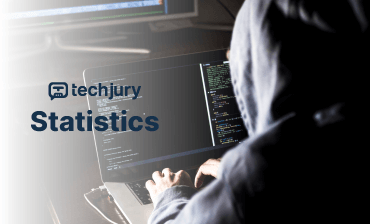In an era where information flows like electricity through global networks, understanding data breaches has become more than a technical necessity—it‘s a critical survival skill for organizations and individuals alike. Imagine walking through a digital landscape where invisible threats lurk behind every connection, waiting to exploit the smallest vulnerability.
The cybersecurity terrain is not just a technological battlefield; it‘s a complex ecosystem where human behavior, technological innovation, and malicious intent intersect. As a data analysis specialist with years of experience dissecting digital threats, I‘ve witnessed firsthand how rapidly the landscape of cyber risks evolves.
The Changing Face of Digital Threats
When we talk about data breaches, we‘re not discussing abstract technological concepts. We‘re exploring real-world scenarios that can devastate businesses, compromise personal information, and reshape entire industries overnight. The statistics are more than numbers—they represent actual stories of vulnerability, resilience, and technological adaptation.
Understanding the Anatomy of Data Breaches
Modern data breaches are sophisticated operations that go far beyond simple hacking attempts. They represent intricate strategies designed to exploit complex technological ecosystems. Think of them as digital heists, meticulously planned and executed with surgical precision.
The Economic Dimensions of Cybersecurity Risks
The financial implications of data breaches extend far beyond immediate monetary losses. Organizations face multifaceted consequences that can fundamentally alter their operational landscape. According to recent research, the average cost of a data breach in 2024 has escalated to unprecedented levels, with some industries experiencing losses exceeding [X] million dollars per incident.
Global Impact Breakdown
Different sectors experience varying levels of vulnerability. Healthcare organizations, for instance, face unique challenges due to the sensitive nature of their data. Financial institutions operate in a high-stakes environment where a single breach can trigger systemic risks. Technology companies, ironically, often become prime targets due to their complex digital infrastructures.
Emerging Threat Landscapes
Phishing: The Silent Predator
Phishing attacks represent a particularly insidious form of cybercrime. Modern phishing strategies have evolved from crude email attempts to sophisticated social engineering campaigns. Consider this: approximately 6.4 billion fake emails circulate globally every single day, with 91% of cyberattacks originating from these deceptive communications.
What makes phishing so dangerous is its psychological manipulation. Attackers don‘t just target technological vulnerabilities; they exploit human trust, curiosity, and emotional triggers. A seemingly innocuous email can become a gateway for comprehensive organizational compromise.
Malware: The Shapeshifting Threat
Malware has transformed from a relatively straightforward infiltration tool to a complex, adaptive threat mechanism. Contemporary malware can:
- Operate autonomously
- Adapt to different technological environments
- Evade traditional detection mechanisms
- Generate revenue through cryptomining
- Establish persistent network presence
The sophistication of modern malware means that traditional antivirus solutions often prove inadequate. Organizations must adopt multi-layered defense strategies that combine technological solutions with continuous monitoring and adaptive response protocols.
Technological Countermeasures and Strategic Defenses
Advanced Defense Architectures
Effective cybersecurity in 2024 requires a holistic approach that transcends traditional perimeter defense models. Zero-trust architectures, which assume no inherent trust and verify every access request, have emerged as a powerful paradigm.
Key technological countermeasures include:
- Artificial Intelligence-powered threat detection
- Behavioral analytics
- Advanced encryption protocols
- Continuous authentication mechanisms
- Automated incident response systems
The Human Factor in Cybersecurity
Technology alone cannot solve cybersecurity challenges. Human behavior remains the most significant variable in organizational digital risk management. Employee training, cultural awareness, and psychological preparedness are as crucial as sophisticated technological defenses.
Psychological Dimensions of Cyber Resilience
Understanding how individuals perceive and respond to digital threats becomes a critical component of comprehensive security strategies. Organizations must invest in creating a culture of security awareness, transforming employees from potential vulnerabilities into active defense mechanisms.
Future Trajectory: Predictive Risk Modeling
As we look toward the horizon of cybersecurity, predictive risk modeling emerges as a transformative approach. By leveraging machine learning and advanced statistical techniques, organizations can anticipate potential vulnerabilities before they manifest.
Quantum Computing and Cybersecurity
The advent of quantum computing introduces both unprecedented challenges and opportunities in the cybersecurity landscape. Quantum technologies promise to revolutionize encryption methodologies while simultaneously presenting new attack vectors.
Conclusion: Embracing Continuous Adaptation
Data breaches are not static phenomena but dynamic, evolving challenges that require continuous learning and strategic adaptation. Success in this environment demands more than technological solutions—it requires a holistic, interdisciplinary approach that combines technical expertise, psychological understanding, and strategic foresight.
Your organization‘s cybersecurity is not a destination but an ongoing journey of vigilance, learning, and proactive defense.
Key Recommendations
- Develop comprehensive, adaptive security frameworks
- Invest in continuous employee education
- Adopt advanced technological solutions
- Foster a culture of digital resilience
- Implement continuous monitoring mechanisms
Remember, in the world of cybersecurity, today‘s robust defense is tomorrow‘s potential vulnerability.
